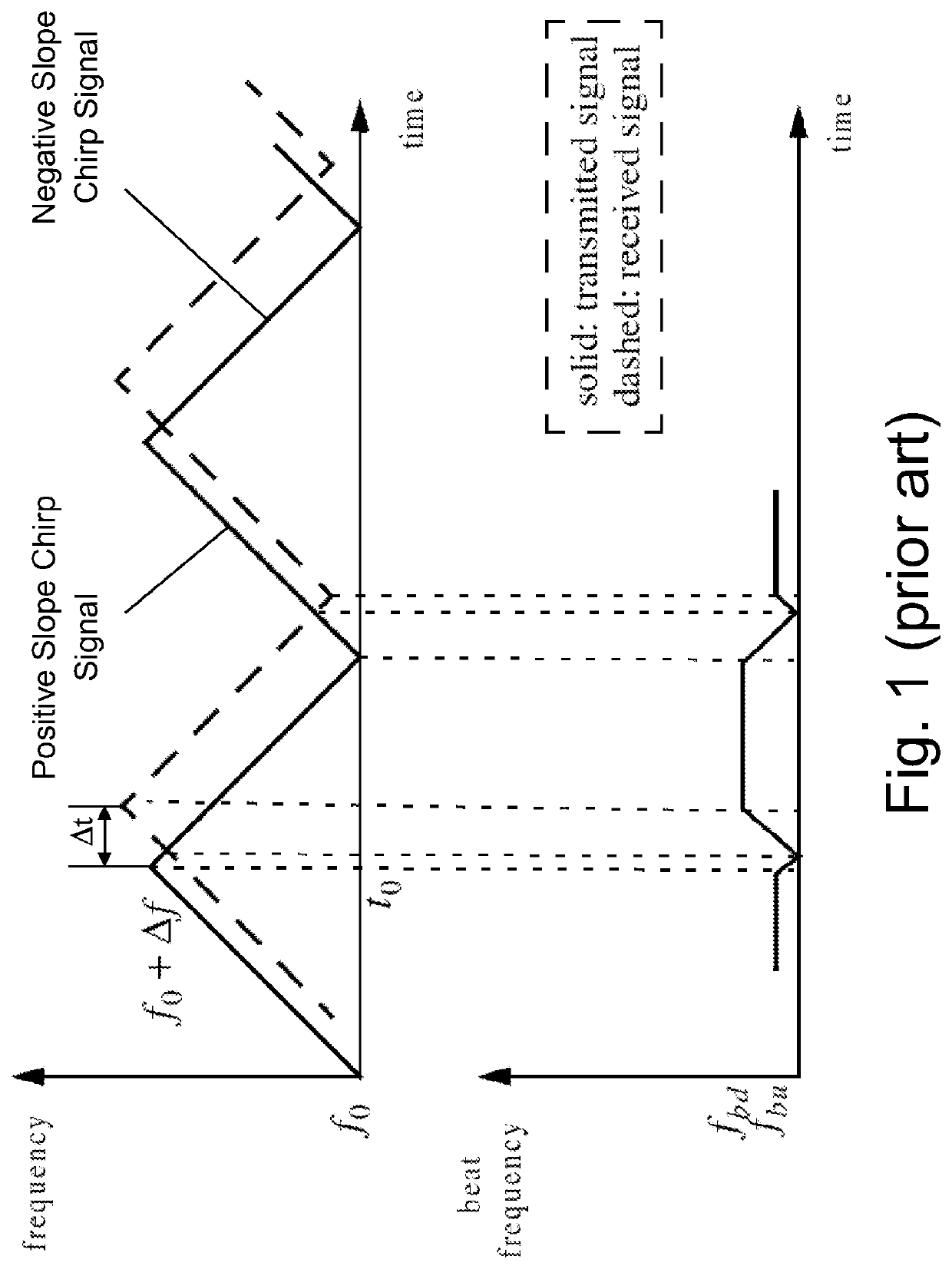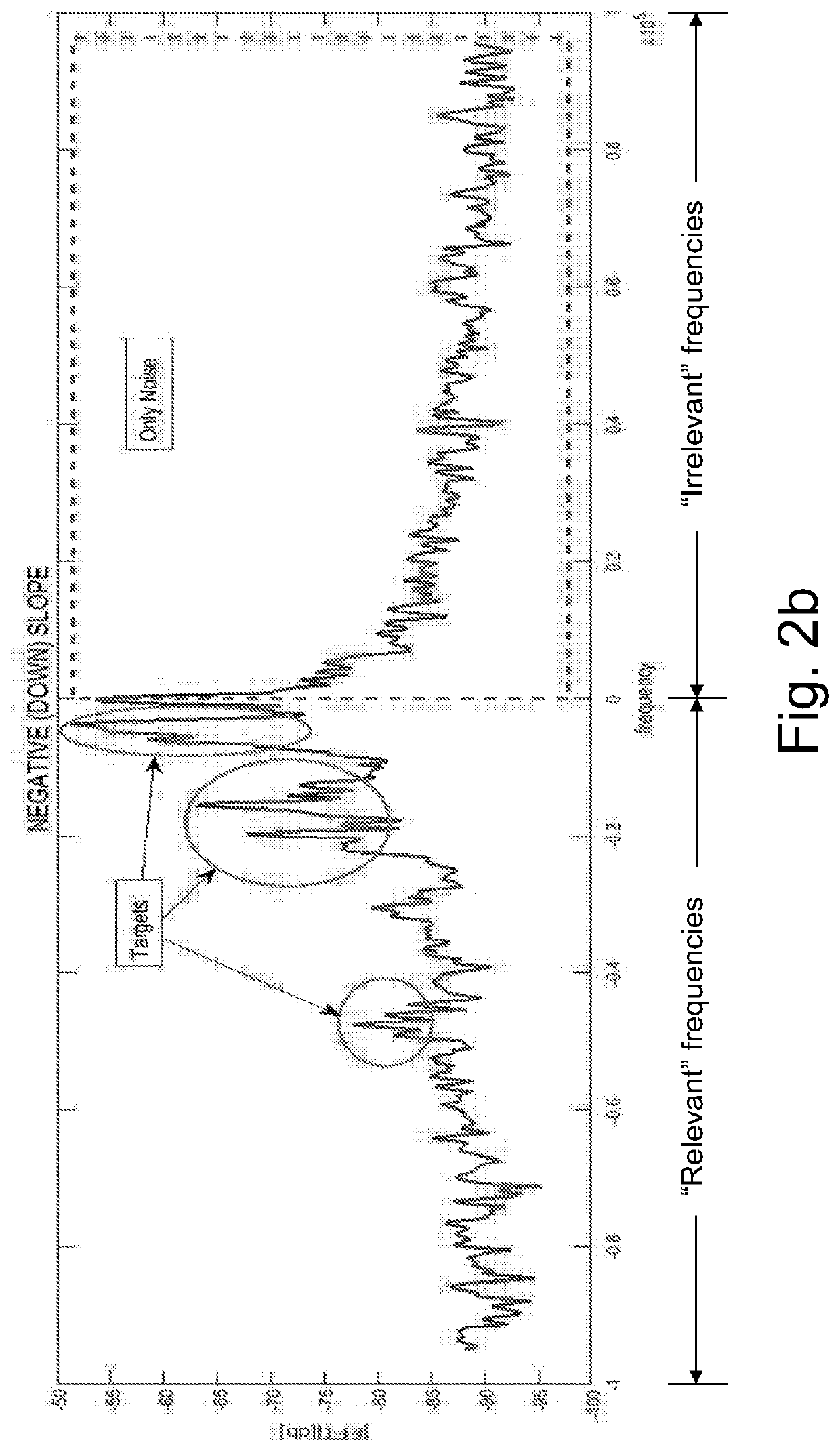Method for separating targets and clutter from noise, in radar signals
a radar signal and target technology, applied in the field of moving platform radar systems, can solve problems such as environmental noise, difficult and sometimes impossible maneuvers, and difficulty in directing radar sensors to the sky
- Summary
- Abstract
- Description
- Claims
- Application Information
AI Technical Summary
Benefits of technology
Problems solved by technology
Method used
Image
Examples
example 1
[0044]For each recorded fIF of one sweep, calculate the furrier transform of the signal (FFT). For each “relevant” frequency (f), find the max amplitude value of a window of size N (N can be, but not limited to 20 frequency bins) around the corresponding “irrelevant” frequency (−f). Then, the signal power at each relevant frequency is compared with the computed noise level described above.
example 2
[0045]Use signal data of M sweeps, M can be equal but not limited to 100. For each frequency f, the variance (σ2) of the Rayleigh distribution (a continuous probability distribution for positive-valued random variables) is calculated from the PDF (Probability Density Function) of the M amplitudes from the “irrelevant” frequency −f. The variance σ2 is used to calculate the probability that the amplitude of the frequency f is the result of only noise.
[0046]Both examples are based on methods used to conclude the probability that the signal came from noise and recognize that the distribution of the amplitude in the ‘irrelevant’ frequencies came from the same random variable as the noise in the ‘relevant’ frequencies.
[0047]Using those methods, every target, regardless of its size will be detected reliably and not only parts of it (as prior art methods do), since a large target will be described by a set of consequent relevant frequencies. For example, if a target is a 10 meters long side...
PUM
 Login to View More
Login to View More Abstract
Description
Claims
Application Information
 Login to View More
Login to View More - R&D
- Intellectual Property
- Life Sciences
- Materials
- Tech Scout
- Unparalleled Data Quality
- Higher Quality Content
- 60% Fewer Hallucinations
Browse by: Latest US Patents, China's latest patents, Technical Efficacy Thesaurus, Application Domain, Technology Topic, Popular Technical Reports.
© 2025 PatSnap. All rights reserved.Legal|Privacy policy|Modern Slavery Act Transparency Statement|Sitemap|About US| Contact US: help@patsnap.com



